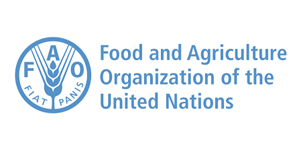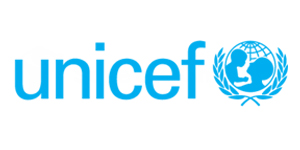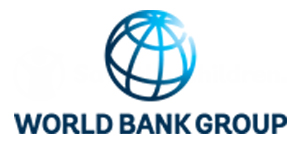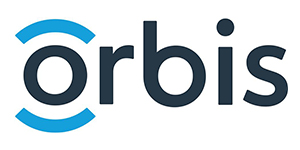Background
|
| The United Nations Development Programme (UNDP) is the global development network of the United Nations system that is on the ground in over 140 countries, with its Headquarters in New York, USA. The Bureau for Management Services (BMS) is a central Bureau tasked with the development of corporate strategies, policies, tools and systems in key cross-cutting management areas. Drawing on sound analytics and a risk-management approach, BMS supports the achievement of development results through management advice, innovative business solutions, and other corporate services in line with international best practices and evolving needs and expectations of development partners. BMS also ensures policy adherence in operations management within UN Rules & Regulations, safeguarding UNDP’s accountability vis-à-vis Member States and other stakeholders.
The Office of Financial Resources Management (OFRM) performs a pivotal role within BMS and within UNDP’s global finance function, partnering with Bureaux and Country Offices. The primary role of OFRM is to maintain the financial integrity of UNDP through providing financial leadership, supporting the efficient and effective management of its financial resources, promoting financial sustainability and responsible resource allocation in the context of a fluctuating funding environment. This is accomplished by the development and implementation of sound financial policies and practices, oversight of corporate financial management performance, and flexible scalable support to resource allocation. OFRM is a key source of information for the Executive Board, General Assembly, to Partners and wider civil society. It supports transparency through the provision of on time and quality statutory and other financial reports that comply with international standards and regulatory guidelines including International Public Sector Accounting Standards (IPSAS) which UNDP adopted in 2012.
OFRM is strengthening UNDP’s performance management framework to more effectively manage the financial performance of UNDP as a whole, to provide a better understanding of the development, performance and financial position of UNDP at various organizational unit levels. In doing so, UNDP is aligning its financial performance measurement system with the new processes and structures arising from UNDP’s internal change programme.
A balanced financial performance management framework, referred to as the Integrated Financial Dashboard (“IFD”), has been developed that aligns performance measures with the strategy of the organization; and has implemented financial performance management measures for UNDP Country Offices that measure the direction and progress made to reach UNDP’s strategic and operational goals and manage financial performance risks. The IFD, which is mainly focused on country offices, is undergoing testing and is expected to be formerly launched in the next few weeks and will be fully operational by the start of 2021.
The IFD is an automated dashboard which extracts data from UNDP’s PeopleSoft ERP system, known as “Atlas” which comprises various modules; including Accounts Payable, Contracts Module (used for management of revenues and receivables), General Ledger, Treasury Module, Human Resources, Grants and Project Management, Bank-to-Book (B2B) and Asset Management modules. Given the decentralized nature of UNDP’s operations with presence in over 140 country offices, access to the Atlas is controlled via customized user profiles and access rights which permit users to access and perform specified functions in accordance with their approved access rights. UNDP has started the process of migrating from the current PeopleSoft ERP to Oracle Cloud ERP. The implementation of different modules will be staggered with target dates for roll-out in the second half of 2021 and 2022. The implementation is being managed by a project team that has been established under UNDP’s Office of Information Management and Technology (OIMT).
OFRM now seeks to expand the implementation of the balanced financial performance management framework to cover the remaining organizational units, consisting of the Central (including Independent Offices) and Regional Bureaus as well as its Global Shared Service Centre (GSSU). Central and Regional bureaus main role is development of policy and oversight of UNDP operations. The GSSU was established in 2012 following the adoption of International Public Sector Accounting Standards (IPSAS) by UNDP for clustering of transaction processing and operations functions previously performed at country offices and headquarter location. Functions that have been clustered to date include processing of revenue of contribution revenue agreements and associated accounts receivable, creation and application of cash deposits, processing of payments through the Accounts Payable (AP) module including refunds to donors, closure of projects in the ERP system, maintenance of vendor master data and performance of bank reconciliation functions. |
Duties and Responsibilities
|
Building on the established framework, as well as the specific measures developed for Country Offices within the IFD, a consultant is sought to expand the implementation of the balanced financial performance management framework to cover the remaining organizational units, consisting of the Central and Regional Bureau, as well as the finance functions to be performed by the Global Shared Service Centre. The resultant comprehensive suite of performance measures should address the full spectrum of financial management (including budgeting, accounting, treasury) responsibilities and functions performed by the respective organizational units, including risks and controls.
Specific tasks:
- Review the existing financial performance management framework, financial dashboards, shared services business processes, current operational and financial performance, and monitoring reports.
- Review oversight reports and other information to identify areas of financial management risks.
- Interview key stakeholders.
- Review similar dashboards and financial performance frameworks of other UN Organizations for benchmarking and adoption of best practices.
- Formulate the specific financial performance management frameworks for:
- The Central and Regional Bureaus;
- The Global Shared Service Centre; and
- Additional risk and control measures proposed that cover Central Bureaus and the Global Shared Service Centre.
- Formulate key performance measures and targets, including measurement definitions, formulas and benchmarks, and related tracking processes. Collect and report the measures/targets, with due consideration to existing information systems.
- Prepare the business design specifications for the inclusion of these new measures within the Integrated Financial Dashboard.
- Identify existing IFD performance measures that need to be revised to reflect accountability of GSSU (and Central and Regional Bureaus to a lower extent) for processes performed on behalf of country offices.
- Review and advice on the impact to financial dashboards of the pending migration by UNDP from the current PeopleSoft ERP to Oracle Cloud ERP.
Deliverables
The following are the key deliverables that will be expected from the consultant:
- Interim report, outlining the recommended performance measures for OFRM review and feedback within 30 days from the consultancy start date; and
- Final report, containing the final specifications for the addition to the Integrated Finance Dashboard, detailed specifications of each measure, recommended targets, as well as any other related information. (Report to be presented at the end of the consultancy).
- Details of changes required to the IFD performance measures as a result of the creation of separate GSSU and Central Bureau financial performance measures and changes to reflect accountability of GSSU for processes performed on behalf of country offices. (Report to be presented at the end of the consultancy).
- The final report should include detailed explanations of the impact to financial dashboards of the pending migration by UNDP from the current PeopleSoft ERP to Oracle Cloud ERP including opportunities to leverage functionalities in the Oracle Cloud ERP for financial dashboards.
Note: Report format to be discussed and agreed with the consultant
Timeframe
| Project elements |
Tentative timeframe |
Lumpsum percentage (%) payable upon completion of Deliverables |
| Submission and acceptance of Interim Report |
1 – 30 December 2020 |
15% |
| Submission and acceptance of Draft Final Report |
End of January 2021 |
40% |
| Submission and acceptance of Final Report |
End of February 2021 |
45% |
|
Competencies
|
Key competencies required
- Sensitivity to cultural, gender, religion, race, nationality and age differences.
- Demonstrated ability to provide guidance and oversight in the area of financial and administrative management
- Proven skills and ability to identify issues, formulate opinions, draw conclusions and recommend solutions
- Able to assess risks and correctly analyze the likelihood of them occurring. Able to then prioritize action to the risks with the biggest business impact
- Strong understanding of regulatory frameworks and instruments
- Strong financial management and accounting skills
- Knowledge of the financial frameworks, programme policies & procedures of the UNDP and/or UN entities.
- Experience in formulating performance measures/KPIs for large finance functions
- Thorough & proven understanding of common business and project management practices
|
Required Skills and Experience
|
Academic qualifications
Advanced University Degree (Master’s) in Business Administration, Finance/Accounting or a relevant discipline, or a professional accounting qualification certificate from an internationally recognized institute of accountancy. Those with professional accounting qualification certificate from an internationally recognized institute of accountancy will have a distinct advantage. Possession of both qualifications will have an added advantage.
Experience
- At least 5 years’ experience in senior financial management position(s) for large international organizations as well as audit experience in a large public auditing firm, required
- Familiarity with international development and the UN system, desired. UNDP experience will be an added advantage.
- Developing country experience would be desirable.
- A sound and detailed understanding of IPSAS or IFRS utilized by international organizations; desired. Experience with UNDP Finance and Accounting procedures will be an added advantage.
- Analytical capabilities combined with strong interpersonal, verbal and written communication skills, required.
- Experience with financial performance measurement metrics, indicators and monitoring, required.
- Experience with data and ERP systems, desired. Knowledge of Peoplesoft and Oracle Cloud ERP systems, will be an added advantage.
Language
Fluency in English. Working knowledge of another UN language is an advantage, particularly Spanish or French
Application Procedure
The application package containing the following (to be uploaded as one file):
- A cover letter with a brief description of why the Offer considers her/himself the most suitable for the assignment;
- Personal CV or P11, indicating all past experience from similar projects and specifying the relevant assignment period (from/to), as well as the email and telephone contacts of at least three (3) professional references;
Note: The above documents need to be scanned in one file and uploaded to the online application as one document.
Shortlisted candidates (ONLY) will be requested to submit a Financial Proposal.
- The financial proposal shall specify a total lump sum amount, and payment terms around the specific and measurable deliverables of the TOR. Payments are based upon output, i.e. upon delivery of the services specified in the TOR, and deliverables accepted and certified by the technical manager. This consultancy is a home-based assignment, therefore, there is no envisaged travel cost to join duty station/repatriation travel.
- In the case of unforeseeable travel requested by UNDP, payment of travel costs including tickets, lodging and terminal expenses should be agreed upon, between UNDP and Individual Consultant, prior to travel and will be reimbursed. In general, UNDP should not accept travel costs exceeding those of an economy class ticket. Should the IC wish to travel on a higher class he/she should do so using their own resources.
- If the Offeror is employed by an organization/company/institution, and he/she expects his/her employer to charge a management fee in the process of releasing him/her to UNDP under a Reimbursable Loan Agreement (RLA), the Offeror must indicate at this point, and ensure that all such costs are duly incorporated in the financial proposal submitted to UNDP.
Evaluation process
Applicants are reviewed based on Required Skills and Experience stated above and based on the technical evaluation criteria outlined below. Applicants will be evaluated based on cumulative scoring. When using this weighted scoring method, the award of the contract will be made to the individual consultant whose offer has been evaluated and determined as:
- Being responsive/compliant/acceptable; and
- Having received the highest score out of a pre-determined set of weighted technical and financial criteria specific to the solicitation where technical criteria weighs 70% and Financial criteria/ Proposal weighs 30%.
Technical evaluation - Total 70% (70 points)
- Criterion 1. Relevance of experience and professional development to the assignment (Maximum of 20 points); (Candidate with relevant experience and professional qualifications attain full mark)
- Criterion 2. Past experience working with IPSAS or IFRS Accounting standards (Maximum of 15 points);
- Criterion 3. Experience of work on similar project with an international organization (at least 5 years) (Maximum of 20 points)
- (5 years of relevant experience = 15 points; from 6 to 9 years of experience = up to 17 points and 10 years and above = up to 20 points).
- Criterion 4. Experience with data and ERP Systems (Maximum of 15 points). (Note: candidates with data experience and Peoplesoft get full mark)
Candidates obtaining a minimum of 70% (49 points) of the maximum obtainable points for the technical criteria (70 points) shall be considered for the financial evaluation.
Financial evaluation - Total 30% (30 points)
The following formula will be used to evaluate financial proposal:
- p = y (µ/z), where
- p = points for the financial proposal being evaluated
- y = maximum number of points for the financial proposal
- µ = price of the lowest priced proposal
- z = price of the proposal being evaluated
Contract Award
Candidate obtaining the highest combined scores in the combined score of Technical and Financial evaluation will be considered technically qualified and will be offered to enter into contract with UNDP.
Institutional arrangement
The Consultant will work under the direct supervision of the Manager in OFRM’s Financial Performance Management Unit (based in Kuala Lumpur, Malaysia) and will be responsible for the fulfilment of the deliverables as specified above.
Payment modality
- It is expected that payments will be made according to completion and acceptance of the deliverables specified above. Once deliverables are received, accepted and certified by the Manager, payment will be made to the consultant within 30 business days in accordance with the payment schedule indicated above.
- The work week will be based on 35 hours, i.e. on a 7-hour working day, with core hours being between 9h00 and 18h00 daily
Annexes (click on the hyperlink to access the documents)
Any request for clarification must be sent by email to cpu.bids@undp.org
The UNDP Central Procurement Unit will respond by email and will send written copies of the response, including an explanation of the query without identifying the source of inquiry, to all applicants.
Location: Home-based
Deadline: 23/11/2020
Application link: https://jobs.undp.org/cj_apply.cfm?cur_job_id=95313 |

















